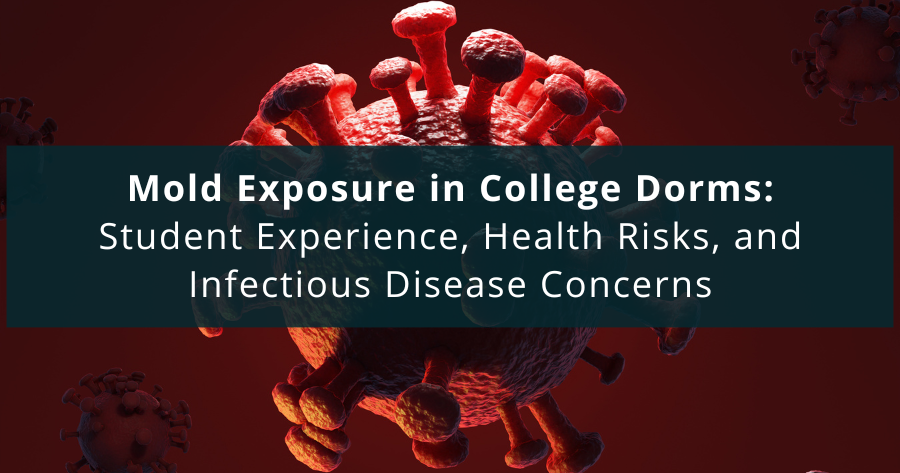Introduction: Mold Problems on U.S. College Campuses
Mold exposure in college dorms is a huge problem here in the United States.
During the summer months, college and high school students shadow me to see if they truly wish to pursue a career in medicine. Many are now in medical school or PA school. Several have graduated and are practicing medicine. Mold on college campuses is huge. Here are some statistics:75% of Ivy League schools have reported mold on their campuses, 42 out of 50 states have colleges that have reported mold on their campuses, and 76% of the top 20 schools in the United States have mold on their campuses.
Below is one of my students’ stories about her freshman year in college.
Living in a Mold-Infested Dorm: Causes and Conditions
It is never smart or healthy to live in an environment prone to growing mold. Sometimes, you might not get a choice. That is what happened to me my freshman year of college. I was assigned to one of the oldest dormitories on the freshman campus, and not only was it old, but it was known for mold problems.
When researching my random dorm assignment, I would find old posts and reviews on sites like Facebook made by parents complaining about the mold issues. However, my school would always claim to have “fixed” the problem every year. Unfortunately, I don’t think it was a problem that could be very easily fixed.
The building was almost 100 years old with little to no improvements or renovations, located in the hot and humid climate of North Carolina. Mold would thrive in the old, dilapidated bathrooms, the closets, and the AC units. Any maintenance complaint about mold in the ACs was met with a maintenance crew “cleaning” the unit, just for the mold to grow back a few days later.
Health Effects of Dorm Mold Exposure on Students
Don’t get me wrong, I enjoyed my time in that dorm; I met some of my best friends because we all lived there. But a common joke in our group is that we were trauma-bonded by our experiences in that building.
I spent almost my entire freshman year with some kind of cold or illness. There were very few days when I would feel 100%. My symptoms usually included a cough of varying severity, both a runny and a stuffy nose, sore throat, and fatigue, and on some severely bad days, I’d experience more flu-like symptoms like fever and body aches, along with everything else.
My asthma did not help either; I constantly found myself needing to use my emergency inhaler due to the cough and respiratory irritation I was experiencing. My roommate was not as affected as I was, but she would also experience some of these symptoms occasionally. Everyone in my friend group was affected to varying degrees.
My roommate and I tried to use an air purifier, dehumidifier, and DampRid to keep our room from growing more mold, but it never helped to the degree that I had hoped.
Severe Illness Linked to Mold Exposure in College Housing
I had one particularly bad episode towards the end of freshman year where I randomly became incredibly sick for 24 hours – headache, severe body aches, fever, chills, fatigue, brain fog, cough, sore throat—and to make matters worse, I had an exam the next day. Needless to say, I had to take a make-up exam; I could barely get myself out of bed because the body aches were so bad.
It was the sickest I had felt all of freshman year, but it was also weirdly the quickest that my symptoms had resolved. Other episodes throughout the year would be similar, though not as severe, lasting for a few days.
Chronic Sinusitis and Infectious Disease Risks From Mold
Overall, as much as I enjoyed the memories made in my freshman-year dorm, it was definitely not because of the dorm itself. It is not a healthy environment for young college students or anyone sensitive to mold, for that matter.
Everyone is different, but no one should be subject to mold exposure. My story is not unique—I’ve heard similar stories from students at other schools. It really should be a priority to make sure that living conditions are safe and healthy for university students. Some schools need to do better and fix these problems to prioritize their students’ health.







